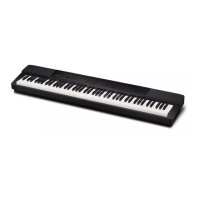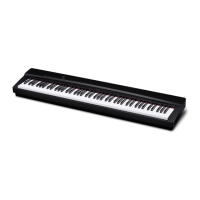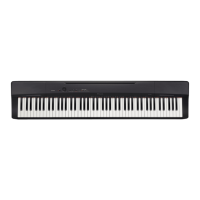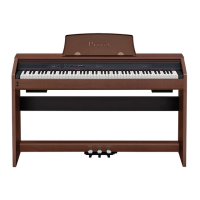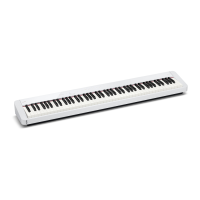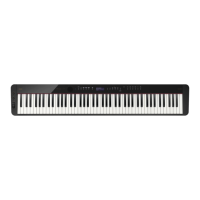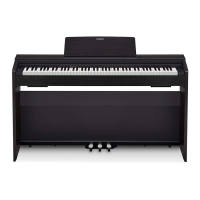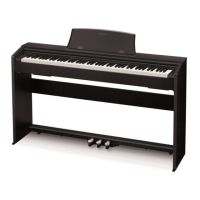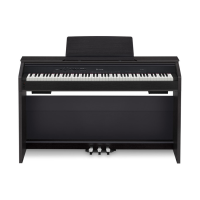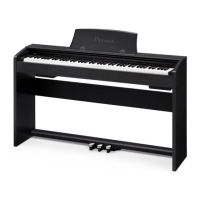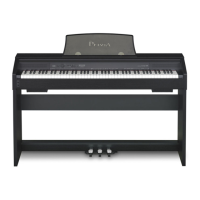Do you have a question about the Casio PX-150 and is the answer not in the manual?
Overview of main, power/amp, console, and keyboard PCB units and their functions.
Explains key matrix logic and contact operation for key detection.
General notes, safety, and preparation before starting disassembly or repair.
Detailed instructions for removing the main case of the instrument.
Steps to disconnect the console unit from the main body.
Instructions for removing the panel unit from the instrument.
Procedure for removing the main PCB unit.
Procedures for removing power/amp and HPA1 PCB units.
Instructions for removing the CNA PCB unit.
Detailed instructions for removing individual keys from the keyboard.
Outlines diagnostic tests, flow, and necessary preparations.
Instructions for initiating diagnostics and performing flash/LED checks.
Procedures for verifying model and ROM version.
Tests for button and pedal functionality.
Procedures for keyboard and speaker polarity checks.
Steps for USB and RAM diagnostic checks.
Exploded diagrams of console and keyboard units.
| Category | Digital Piano |
|---|---|
| Touch Response | 3 sensitivity levels, Off |
| Sound Source | Multi-dimensional Morphing AiR |
| Maximum Polyphony | 128 notes |
| Tones | 18 built-in tones |
| Lesson Function | Part On/Off |
| Metronome | Yes |
| Duet Mode | Yes |
| Speakers | 12cm x 2 |
| Amplifiers | 8W + 8W |
| Modes | Layer, Split |
| Songs | 60 built-in songs |
| Tuning | A4 = 415.5Hz ~ 440.0Hz ~ 465.9Hz |
| Digital Effects | Reverb (4 types), Chorus (4 types) |
| Recorder | 2 tracks, 1 song |
| Transpose | -12 to +12 semitones |
| Pedals | Included: SP-3, Optional: SP-33 (damper, soft, sostenuto) |
| Connections | Headphones (2), USB (to Host), Sustain Pedal |
| Power Supply | AC Adapter AD-A12150LW |
| Dimensions | 1, 322 x 286 x 135 mm (without music stand) |
| Weight | 11.1 kg (without music stand) |
| Keyboard | 88-key, Scaled Hammer Action Keyboard II |
